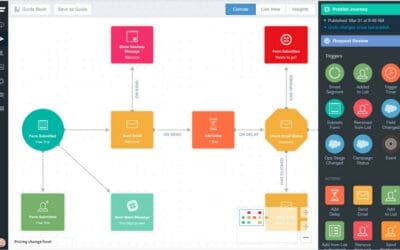 In today’s fast-paced business environment, change is inevitable. Organizations face a myriad of challenges, from technological advancements to emerging competitors, and even shifts in regulations and economic trends. If companies fail to adapt, they risk stagnation or, in worst cases, failure. Research shows that nearly 50% of organizational change initiatives do not succeed, underscoring the importance of effective change management skills for managers and business leaders alike.
In today’s fast-paced business environment, change is inevitable. Organizations face a myriad of challenges, from technological advancements to emerging competitors, and even shifts in regulations and economic trends. If companies fail to adapt, they risk stagnation or, in worst cases, failure. Research shows that nearly 50% of organizational change initiatives do not succeed, underscoring the importance of effective change management skills for managers and business leaders alike.
If you’ve been entrusted with steering a significant change initiative in your organization, or you aspire to take on such responsibilities in the future, understanding the change management process is essential. This post will outline what change management entails, the critical steps involved, and how you can enhance your managerial skills to lead effectively.
What is Change Management?
At its core, organizational change involves the actions a company undertakes to modify or adjust a significant part of its structure. This can encompass various aspects, including company culture, internal processes, technology, corporate hierarchy, and more.
Change can be categorized into two main types:
- Adaptive Changes: These are smaller, gradual shifts that organizations make to improve their products, processes, or strategies. For example, hiring a new team member to manage increased demand or implementing remote work policies to attract talent.
- Transformational Changes: These are larger, more sweeping changes that signify a significant departure from the norm. Launching a new product line or expanding into international markets are both examples of transformational change.
Change management is the systematic approach to guiding these organizational changes from their conception through to implementation and resolution. Understanding this process is crucial for leaders to ensure transitions are smooth and effective.
The Change Management Process
Change management typically follows a series of structured steps. Here’s a breakdown of the five key stages involved in the process:
1. Prepare the Organization and Stakeholders for Change
For change to be successfully executed, organizations must be prepared both logistically and culturally. The first step is to help employees recognize the need for change. This involves raising awareness about the challenges or issues the organization faces and fostering a sense of urgency for change. Gaining buy-in from employees is essential as it reduces resistance and friction later in the process.
2. Craft a Vision and Plan for Change
Once the organization is ready to embrace change, the next step is to develop a comprehensive plan for implementation. This plan should outline:
- Strategic Goals: What objectives does this change aim to achieve?
- Key Performance Indicators: How will success be measured? What metrics need to change?
- Project Stakeholders and Team: Who will oversee the implementation? Who makes key decisions?
- Project Scope: What specific steps will be included in the change process?
The plan must also accommodate potential roadblocks and uncertainties that may arise during implementation.
3. Implement the Changes
With a solid plan in place, it’s time to execute the change. This could involve adjustments to company structure, strategy, systems, or employee behaviors, depending on the specifics of the initiative. Change managers should focus on empowering employees to take necessary actions, celebrating short-term wins, and maintaining clear communication throughout the process to reinforce the vision for change.
4. Embed Changes Within Company Culture and Practices
Once the changes have been implemented, it’s critical to prevent a regression to the old ways. Embedding changes into the company culture can help mitigate the risk of backsliding. This may involve establishing new organizational structures, controls, and reward systems that align with the desired changes.
5. Review Progress and Analyze Results
Even after a change initiative concludes, it’s vital to assess its effectiveness. Conducting a thorough review can help determine whether the goals were achieved and what lessons can be learned for future initiatives. Questions to consider include: Were the project goals met? What worked well, and what didn’t?
Key Takeaways for Successful Change Management
While each change initiative is unique, they generally follow similar processes. To effectively manage change, leaders must understand these steps and be prepared to navigate them. Here are a few additional tips for successful change management:
- Understand the Need for Change: Recognizing why change is necessary is crucial for addressing underlying causes effectively.
- Have a Detailed Plan: A well-structured plan with defined objectives and strategies is essential for guiding the change process.
- Communicate Effectively: Open communication with team members and stakeholders is vital for fostering collaboration and understanding.
- Anticipate Roadblocks: While it’s impossible to predict every challenge, being proactive about potential barriers can help mitigate risks.
Leading Change Management Successfully
If you’re looking to lead a change initiative within your organization or want to prepare yourself for future opportunities, it’s important to develop the necessary skills for success. Consider enrolling in an online management course or a leadership course focused on organizational change. Such programs can provide valuable insights and equip you with the tools needed to drive effective change.
In conclusion, mastering the change management process is crucial for any leader aiming to navigate their organization through transitions successfully. By following these structured steps and continually enhancing your skills, you can become a more effective manager and lead your team towards success.
Change management applies to all aspects of your business, everything from accounting, to marketing, to operations, to sales.






